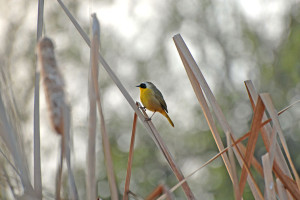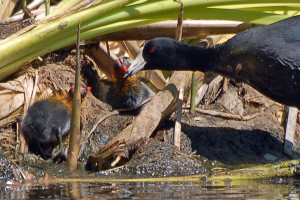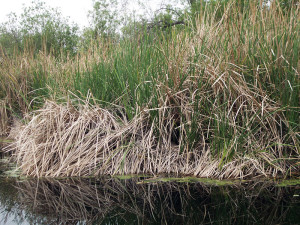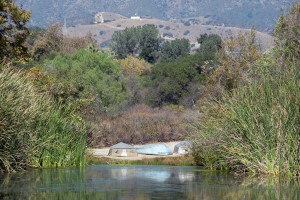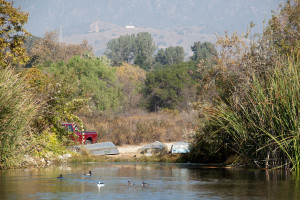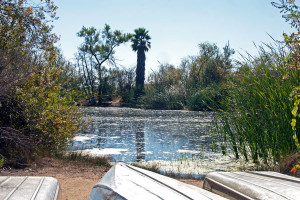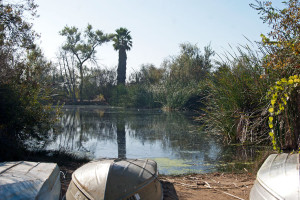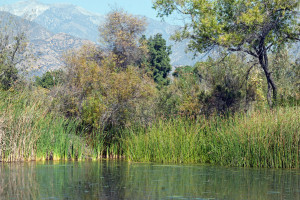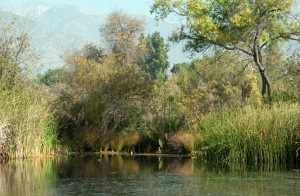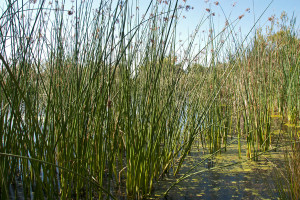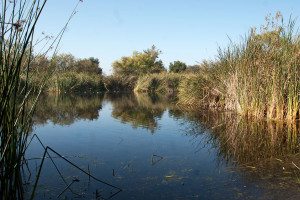Conjure up a mental image of pHake Lake, and what do you see? Cattails! As shown nicely in the title image for this blog, a ring of Broad-leaved Cattails (Typha latifolia) almost completely encircles the lake. Broad-leaved Cattails are native to California, and the BFS they provide habitat for some of our resident native animals, including the Common Yellowthroat (Geothlypis trichas)…
…and the American Coot (Fulica americana).
Left to their own devices, however, the cattails will spread rapidly expand into a thick monoculture, excluding other plants from the water’s edge, reducing habitat variety and biodiversity, and blocking access to the lake.
It’s not clear why cattails grow so thickly in some settings while occurring only as scattered plants in high-quality natural areas. Both hydrological factors and nutrient input have been implicated in cattail overgrowth. Whatever the reason, cattails at the BFS need to be managed to maintain pHake Lake’s habitat and access, and on Saturday, October 19, volunteers removed cattails from the boat landing area and the area in front of one of the little islands at the east end of the lake that separate the lake from a shallower marshy area. Cattails were pulled or cut below the water surface, and some overhanging limbs were also removed.
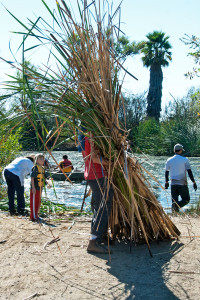
Those are some cattails! Prof. David Harris (HMC) can barely be seen behind the cattails he’s hauling out, as other volunteers head out to the lake to get more. ©Nancy Hamlett.
Access to the boat landing is much improved, as can be seen in these before and after photos:
The volunteers also made huge difference in front of the island. In addition to cattails, the volunteers also removed Naked-stemmed Bulrushes (Schoenoplectus sp.), which had grown up in front of the island after last year’s cattail trimming. While we were glad to see the plant variety, the bulrushes blocked the view from the island, which is a popular spot for observing waterfowl on the lake.
